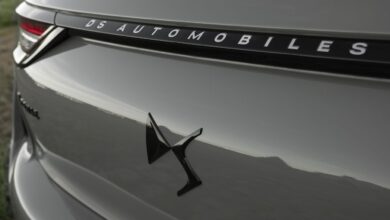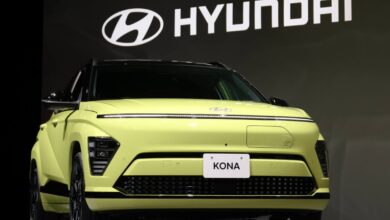Indian Automobile Market as the Future of EVs

Electric Vehicles (EV) are the buzz in the Indian automobile market and this buzz does not seem to calm down soon. India is looking forward to being the biggest EV market of the globe. And for a market as innovative and adaptive as ours, this dream does not look like a far off thing. To bring this grand vision to reality, we need to manufacture and innovate the technology in-house. While there are segments of these EVs which are manufactured locally, there are advanced chemistry batteries which are imported from other countries. Due to this, manufacturing is limited to assembling battery packs. Apart from this, there are multiple hurdles in the way of India becoming a Global EV market. While the Indian government backs this growing market of EVs, every single problem can have a solution.
The EV components that require only limited technological upgradation are manufactured locally. Chassis can be cited as an example in this case. Also, there has been substantial localisation in traction motors, control units and battery management systems over the years. These are areas where we have readiness to manufacture. The advanced chemistry batteries, which are imported, remain the most critical and the costliest components account for almost 35-40% of the vehicle price. Battery cells are currently not manufactured in India, and thus most OEMs rely on imports.
Looking at the brighter side, the low localisation levels give rise to manufacturing opportunities for domestic auto component suppliers. For parts that are already used in internal combustion engine (ICE) vehicles, there could be technological advancements in certain cases, resulting in higher content per vehicle. To achieve mass scale penetration of EVs and a competitive cost structure, India will need to create its own ecosystem of developing battery cells locally.
Also Read | India may clock sale of 5 crore EVs by 2030: Study
Still, multiple challenges exist on the road against the establishment of a cell manufacturing the ecosystem. The primary hurdles being:
- Technology complexity,
- High capital intensity
- And lack of raw material availability.
The ability of battery manufacturers to enter into agreements/alliances with players across the value chain to mitigate these risks, coupled with the creation of a robust framework for recycling would remain the most pressing obstacle.
A confluence of factors such as improving product portfolio, charging infrastructure, financing availability and a gradual decline in battery prices would aid in acceleration of EV penetration across segments over the medium term. Minimal range anxiety, limited upfront pricing difference and a viable total cost of ownership (TCO) will enable faster penetration in e-2W, e-3W and e-bus segments. EV penetration in the passenger car segment will be gradual as lack of adequate infrastructure and high initial cost of ownership remain key hurdles. Having said that, from the supply side, the next 12-18 months are likely to witness the OEMs launching many new EV models.
ICRA expects EVs to account for around 25% of domestic 2W sales and 15% of passenger vehicles sales by 2030, translating into strong market potential for EV components. Accordingly, we project the Indian e-2W component market potential to exceed Rs. 1,00,000 crore by 2030, while the e-passenger vehicle (e-PV) component is foreseen at another Rs. 50,000 crore at least, in terms of revenue potential for ancillaries. The actual growth for domestic auto component suppliers would depend on localisation levels and value addition.
In ICRA’s view, the demand for EV batteries in India (for domestic sales alone) is expected to reach ~15 GWh by 2025 and ~60 GWh by 2030. Battery cell capacities need to scale up in India (beyond the current announcements/those under construction) to even meet domestic demand. Considering this, those manufacturing battery cells locally are likely to look at the domestic market first, before exploring exports. However, the cells manufactured in India could be used in EVs that could get exported from India. For other EV components, while those produced in India are largely used in vehicles manufactured in India, there are players who are exporting EV components to overseas markets as well.
Also Read | Aeris technology shaping India’s EV Market
For all the above mentioned to come to reality, the Government of India needed to step inside the EV innovation ground. It is worth mentioning that the Government of India’s efforts to enhance EV adoption through policy support have been instrumental in helping increase the electrification adoption over the past few years. Under the FAME-II policy, the Government granted an outlay of Rs. 11,500 crore for demand incentives. The incentives under the Electric Mobility Promotion Scheme for e-2Ws and e-3Ws, post the sunset of FAME-II, will continue to provide a disruption-free environment for the specific segments. Although the reduction in the subsidy benefit is a short-term impediment and may impact demand to some extent, the original equipment manufacturers (OEMs) continue to strive to offer competitive products by leveraging their cost structure through localisation of key components and value engineering capabilities. Apart from the demand incentive from the Central Government, several states have EV policies as on date. Further, the Government of India has also announced the PLI scheme amounting to Rs. 25,938 crore for auto and auto components, apart from the Rs. 18,100 crore for ACC batteries to facilitate localisation. The new e-vehicle policy, announced in March 2024, also aims at increasing localisation, by stipulating domestic value addition requirements to avail import duty benefits on CKDs.
Views expressed by: Mr. Shamsher Dewan, Senior Vice President & Group, Head – Corporate Ratings, ICRA Limited
Be a part of Elets Collaborative Initiatives. Join Us for
Upcoming Events and explore business opportunities. Like us on
Facebook , connect with us on
LinkedIn and follow us on
Twitter,
Instagram.




